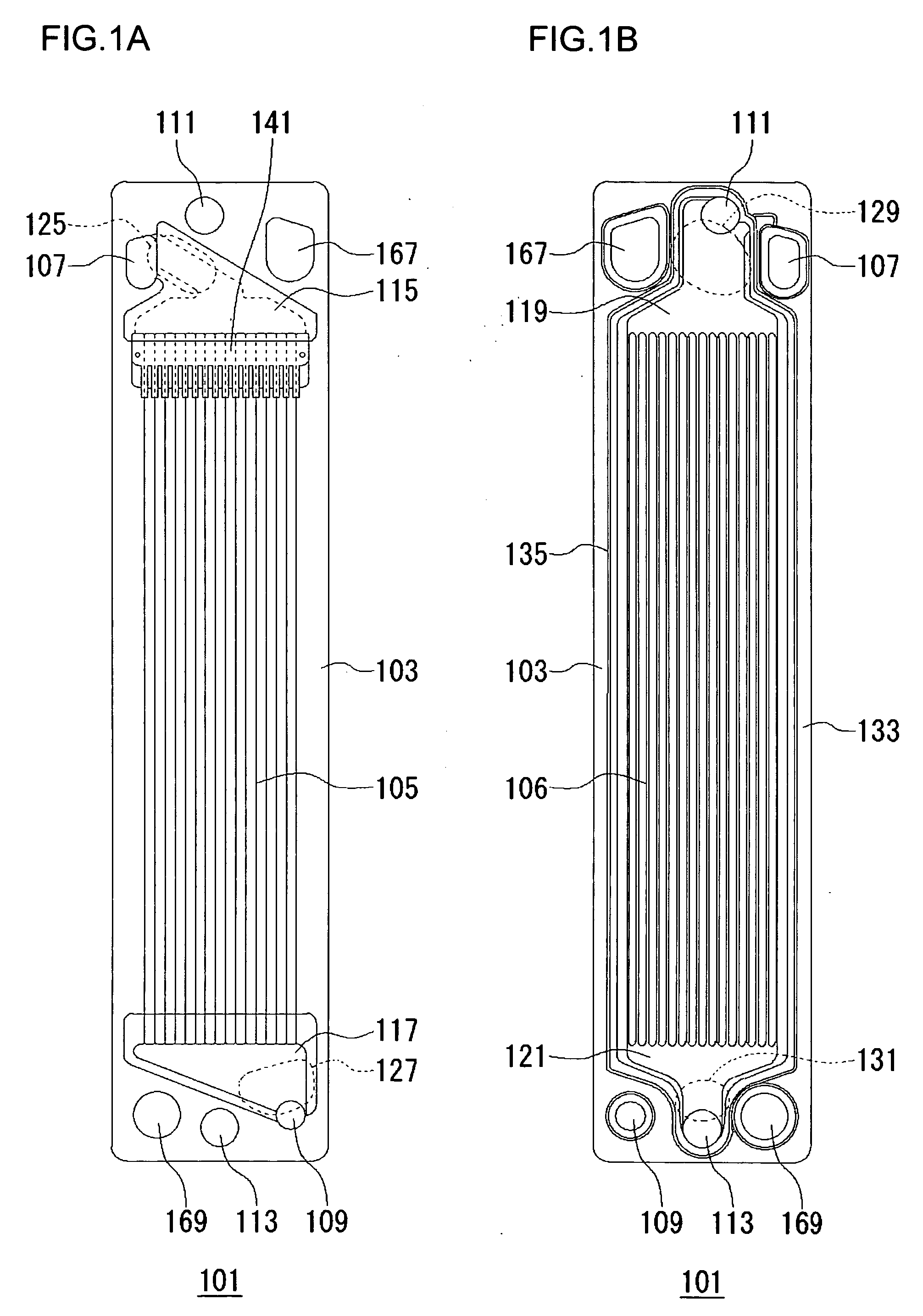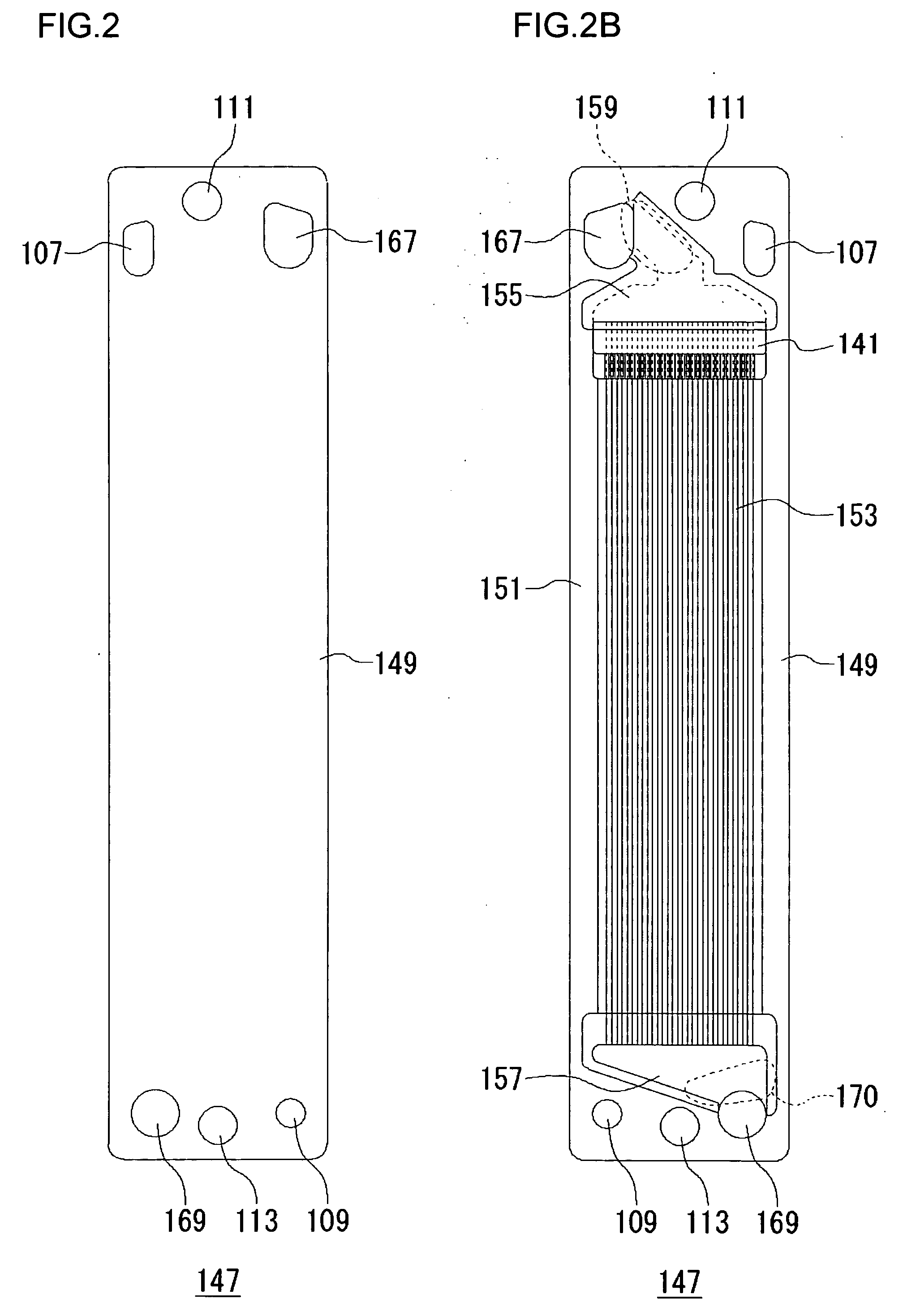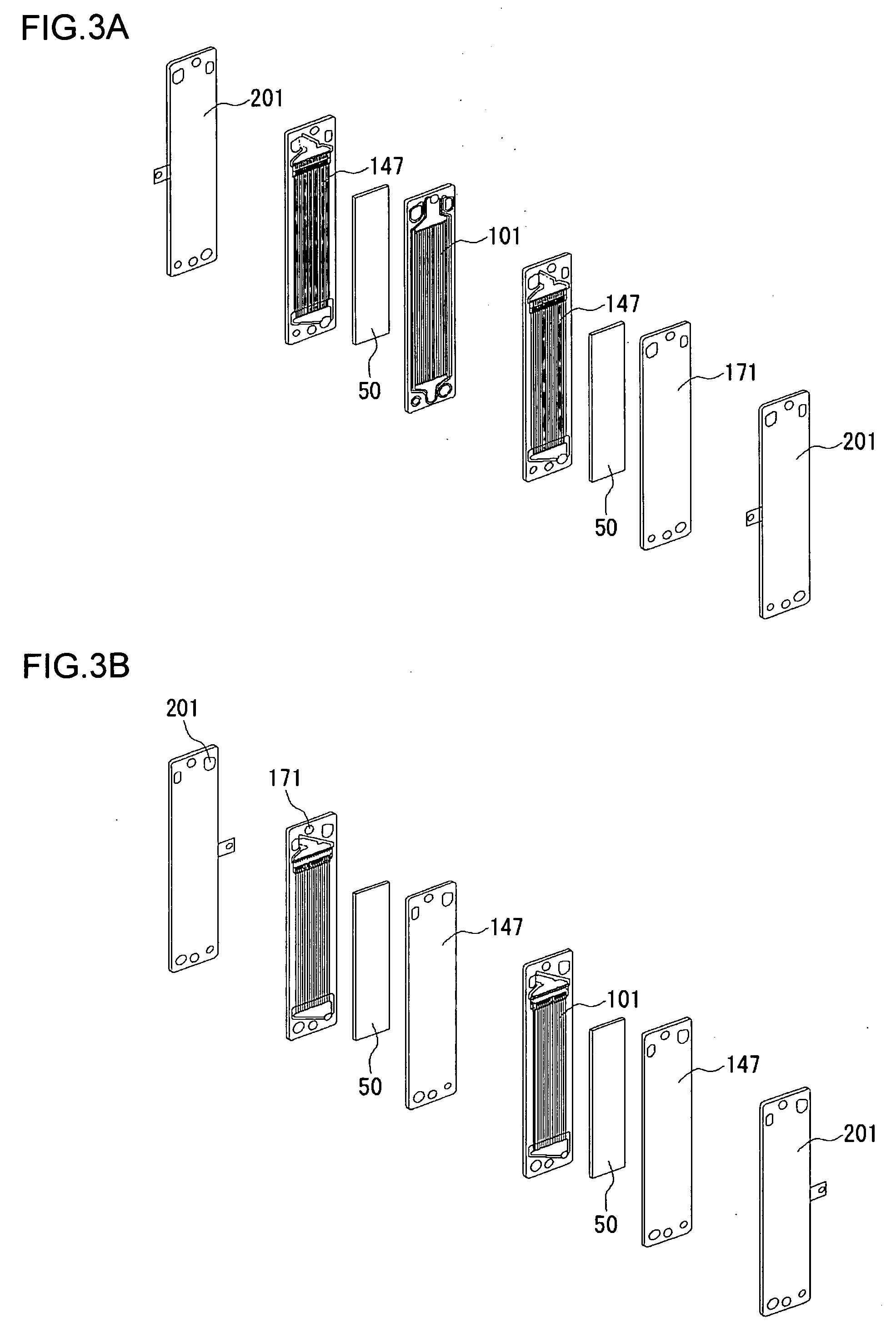Fuel cell and fuel cell separator
a fuel cell and separator technology, applied in the field of fuel cell and separator, can solve the problems of inability to properly operate, structure failure to prevent the cooling of reactant gas, and inability to supply stable reactant gas
- Summary
- Abstract
- Description
- Claims
- Application Information
AI Technical Summary
Benefits of technology
Problems solved by technology
Method used
Image
Examples
first embodiment
[0036] In the first embodiment, a fuel cell separator in which fuel passages are formed on a surface thereof so as to be substantially parallel with each other, and a fuel cell separator in which air passages are formed on a surface thereof so as to be substantially parallel with each other will be described. A fuel cell provided with these separators will be described. In the first embodiment, a structure in which coolant passages for a coolant such as a cooling water are formed on the back of the fuel passages will be described. Alternatively, the coolant passages may be formed on the back of the air passages. A fuel cell separator in which the coolant passages are formed on a surface thereof may be provided aside from the fuel electrode separator and the air electrode separator.
[0037]FIG. 3A is an exploded perspective view of a structure of a fuel cell stack that includes fuel cell separators according to the first embodiment. FIG. 3B is an exploded perspective view of a back si...
second embodiment
[0081]FIG. 6 shows a structure of a surface of a fuel cell separator according to the second embodiment on which surface coolant passages formed. Fuel passages are formed on the opposite surface not shown. The basic structure of the separator of FIG. 6 is the same as that of FIG. 1B. A difference is that the coolant introduction passage 129 is formed to surround the entirety of the first manifold for fuel supply 107 and the first manifold for air supply 167.
[0082]FIG. 7 shows that, in a similar configuration as the first embodiment, the first manifold for coolant supply 111 is located between the first manifold for fuel supply 107 and the first manifold for air supply 167. The distance d1 between the first manifold for coolant supply 111 and the first manifold for fuel supply 107 is smaller than the distance d2 between the first manifold for coolant supply 111 and the first manifold for air supply 167.
[0083] The same advantages as available in the first embodiment are also availab...
PUM
| Property | Measurement | Unit |
|---|---|---|
| temperature | aaaaa | aaaaa |
| temperature | aaaaa | aaaaa |
| temperature | aaaaa | aaaaa |
Abstract
Description
Claims
Application Information
 Login to View More
Login to View More - R&D
- Intellectual Property
- Life Sciences
- Materials
- Tech Scout
- Unparalleled Data Quality
- Higher Quality Content
- 60% Fewer Hallucinations
Browse by: Latest US Patents, China's latest patents, Technical Efficacy Thesaurus, Application Domain, Technology Topic, Popular Technical Reports.
© 2025 PatSnap. All rights reserved.Legal|Privacy policy|Modern Slavery Act Transparency Statement|Sitemap|About US| Contact US: help@patsnap.com



